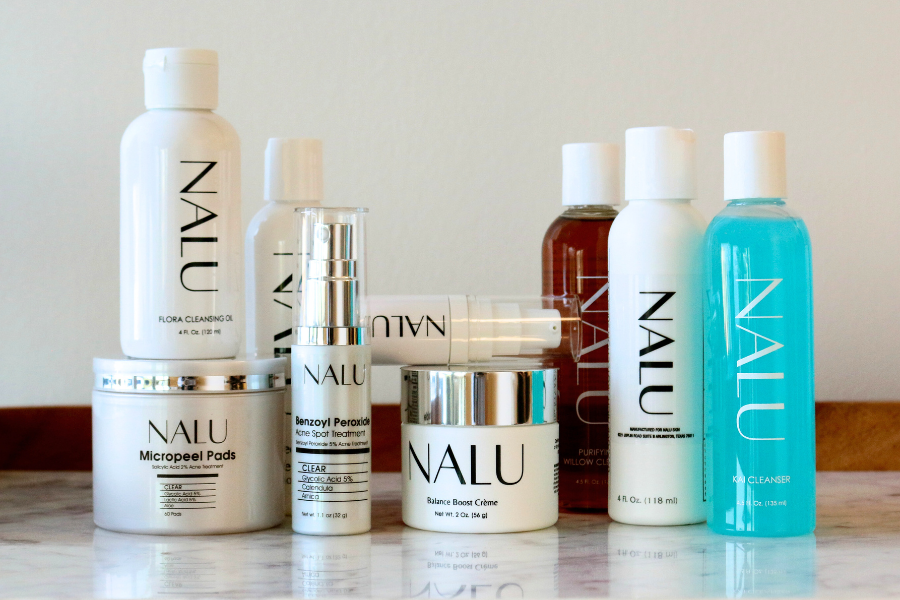
Why Skincare Isn’t One-Size-Fits-All: Finding Your Unique Skin Routine
Share
Skincare can feel overwhelming with so many products, routines, and advice available. While it may be tempting to adopt a popular routine or use the same products as a friend, skincare is not one-size-fits-all. Just as our bodies and diets are unique, so are our skin types and needs. Here’s why skincare routines should be customized and what you should consider when building your unique regimen.
Understanding Your Skin Type
The foundation of any effective skincare routine is understanding your skin type. Skin types vary broadly, typically categorized into four main types:
- Oily Skin: Prone to shine and breakouts due to excess sebum production.
- Dry Skin: Lacks oil and may feel tight, flaky, or sensitive.
- Combination Skin: Has both oily and dry areas, often with an oily T-zone.
- Sensitive Skin: Reacts easily to products and environmental factors.
Each skin type requires different products and approaches. For instance, oily skin may benefit from lightweight, oil-free formulas, while dry skin often needs heavier moisturizers to keep it hydrated.
Why Skincare Routines Need to Be Personalized
-
Different Skin Concerns
Beyond skin type, we all have individual skin concerns. Acne, hyperpigmentation, aging, and sensitivity are just a few of the issues people face. An effective skincare routine should address these specific concerns directly. For example, someone with acne-prone skin may need salicylic acid, while someone targeting fine lines might focus on retinoids or collagen-boosting ingredients. -
Ingredient Sensitivities and Allergies
Many people are sensitive to common skincare ingredients, including fragrances, alcohols, and certain acids. A product that works wonders for one person might trigger irritation or breakouts in another. This is why paying attention to ingredient labels and patch-testing new products can be crucial for customizing a safe, effective skincare routine. -
Lifestyle and Environment
Factors like climate, lifestyle, and diet can significantly impact your skin. A humid climate can make oily skin worse, while cold weather might make dry skin feel tight and uncomfortable. Similarly, if you live in a polluted urban area, you may benefit from products high in antioxidants to protect against free radicals. Personalizing your routine to fit your environment ensures that your skin’s needs are consistently met. -
Age and Hormonal Changes
Skin changes over time. As we age, collagen production slows down, and the skin's natural barrier can weaken, making it more prone to dryness and wrinkles. Hormonal changes during puberty, pregnancy, or menopause can also lead to shifts in skin type and concerns. Adapting your routine to these changes keeps your skin balanced and healthy. -
Skin Goals and Personal Preferences
Skincare goals vary from person to person. Some people focus on anti-aging, while others may want to manage acne or achieve a radiant glow. Your routine should align with your goals, even if it means adjusting over time. Personal preferences, like texture and fragrance, also matter—choosing products you enjoy using can make a world of difference in maintaining a routine.
Building a Personalized Skincare Routine
Creating a routine tailored to your unique skin doesn’t have to be complicated. Here’s a step-by-step approach:
-
Identify Your Skin Type and Concerns
Before shopping, assess your skin type and pinpoint your top concerns. This might include oiliness, acne, dryness, pigmentation, or aging. -
Choose Targeted Products
Look for products that address your specific needs. For acne, seek out ingredients like salicylic acid or benzoyl peroxide. For anti-aging, focus on retinoids and peptides. Sensitive skin? Stick with gentle, fragrance-free products. -
Start Simple and Patch Test
Begin with the basics—cleanser, moisturizer, and SPF—and gradually introduce treatment products, like serums and masks. Patch-test any new product on a small area of skin to ensure you don’t have a reaction. -
Adjust Based on Results
Skincare is often about trial and error. Give new products a few weeks to show results, and pay attention to any irritation or changes in your skin’s texture. You may need to tweak products or routines as you observe what works best. -
Seek Professional Guidance
Estheticians and dermatologists can provide expert advice on what will benefit your skin specifically. Whether you have a complex skin issue or just want to fine-tune your routine, their expertise can help you achieve optimal results safely.
When in Doubt, Consult an Expert
Navigating skincare can be challenging, but you don’t have to do it alone. Consulting with a skincare professional, like an esthetician, can help you find products and routines that align with your unique skin needs and goals. A personalized approach is key to addressing underlying skin issues and achieving the healthiest, happiest skin possible.
In skincare, one size never truly fits all. By customizing your routine and choosing products that cater to your unique needs, you can achieve a routine that not only improves your skin’s appearance but also strengthens its health over time. Your skin is unique—and your skincare should be too!